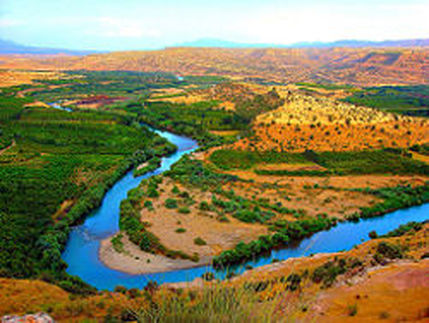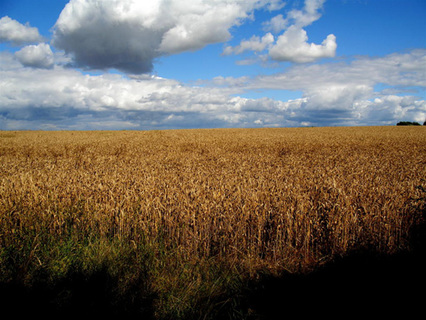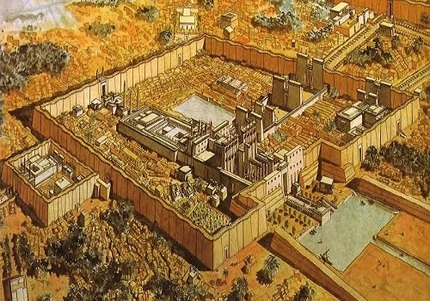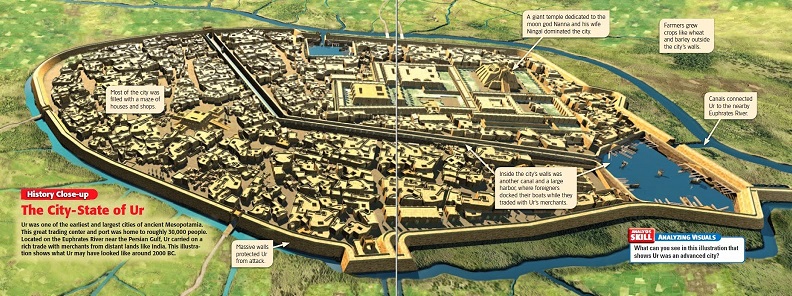Mesopotamia 5 Traits of Civilization
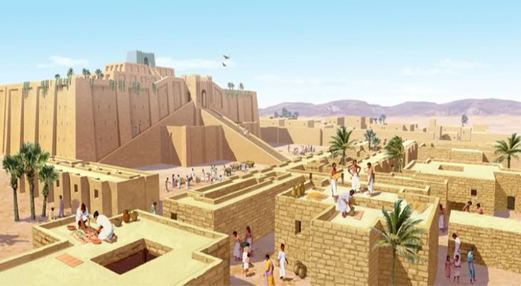
Review: Who were the Sumerians?
The Rise of Civilization
The domestication of crops and animals is called agriculture. Before the rise of agriculture, people were nomadic hunter-gatherers. That is, they moved each season in search of food. The rise of agriculture, allowed people to give up their nomadic, hunter-gatherer lifestyles and settle into villages. As agricultural techniques improved, farmers sometimes produced surpluses. For example, farmers might grow more than what their families or villages could use. The extra was an economic surplus. Surpluses in early farming villages were not limited to food but might also include cloth and other products such as wool or animal skins. Surpluses helped villages survive bad seasons.
The Rise of Civilization
The domestication of crops and animals is called agriculture. Before the rise of agriculture, people were nomadic hunter-gatherers. That is, they moved each season in search of food. The rise of agriculture, allowed people to give up their nomadic, hunter-gatherer lifestyles and settle into villages. As agricultural techniques improved, farmers sometimes produced surpluses. For example, farmers might grow more than what their families or villages could use. The extra was an economic surplus. Surpluses in early farming villages were not limited to food but might also include cloth and other products such as wool or animal skins. Surpluses helped villages survive bad seasons.
|
As farmers began to produce more surpluses, villages did not need as many farmers to raise food. As a consequence, some people began specializing in other types of work such as making pottery or weaving cloth. Specialized workers also created surpluses and might trade their goods for food or other services. As life in villages became more complex, the types of specialized jobs grew. In addition to farmers and craftsmen, specialized workers in complex villages included holy people and, eventually, government.
In this way, surpluses encouraged the growth of populations and increased trade. As this happened, more people decided to settle into these communities. Soon, the villages grew larger and became cities. From your last lesson, you'll remember that cities are an important trait of civilization. Because of this, it can be said that surpluses are the first step on the way to civilization. It wasn't long before city leaders had to come up with ways to organize workers to solve civic problems, such as building public structures and cleaning irrigation canals. As the cities became more populated, more types of specialized workers were needed and society and culture became more complex. These changes led to an advanced type of culture called civilization. The words city, and civilization both share a common Latin root that is related to the idea of citizen. So, you might say that one of the traits of civilization is a larger population. Historians think the first civilization arose about 3300 BCE in Sumer, which is in southern Mesopotamia. |
What is the first step on the way to civilization?

Traits of Civilization
Civilization is characterized by five traits: specialized workers, complex institutions, record keeping, advanced technology, and advanced cities. It's true that a culture or society may demonstrate evidence of one or more of these traits, but without possessing all five a culture, even an advanced one, can not be called a civilization.
Civilization is characterized by five traits: specialized workers, complex institutions, record keeping, advanced technology, and advanced cities. It's true that a culture or society may demonstrate evidence of one or more of these traits, but without possessing all five a culture, even an advanced one, can not be called a civilization.
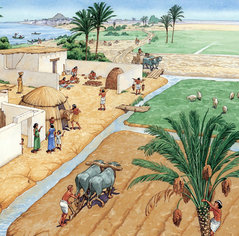
1) Specialized Workers: The larger populations of a city demand that more food be produced. In general, a society needs food surpluses before civilization can develop. Having food surpluses allowed some people to do other types of work besides farming. With food surpluses, workers can specialize in jobs that require special skills. For instance, Sumerian workers built houses, sewed clothes, created pottery, and cooperated on building public projects such as ziggurats and irrigation canals. With so many needs and such a variety of workers, some people took on the job of organizing society. In early Sumer, priests did that job. They ran society and acted as judges.
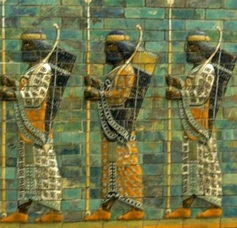
2) Complex Institutions: In time, religion and government became institutions. An institution is a group of people who share a specific purpose. For instance, schools are institutions that exist to educate a population. Religion is an institution that helps a population meet its spiritual needs. An army is an institution that helps a society meet its security needs.
3) Record Keeping: Societies must keep track of many things. For example, rulers may want to measure the amount of surpluses stored in the city. Keeping records usually involves writing, but not always. In Mesopotamia, people started by using wooden counting sticks. Later, they invented the world's first system of writing, cuneiform.
3) Record Keeping: Societies must keep track of many things. For example, rulers may want to measure the amount of surpluses stored in the city. Keeping records usually involves writing, but not always. In Mesopotamia, people started by using wooden counting sticks. Later, they invented the world's first system of writing, cuneiform.
|
|
|
The Mesopotamians wrote down all sorts of things, including great poems and stories. CLICK above to enjoy parts 1 & 2 of the Epic of Gilgamesh, about the legendary Mesopotamian King of Uruk. It is one of the greatest stories ever told
4) Advanced Technology: As people learn better ways to do things, societies advance. The people of early Sumer learned to use canals to irrigate crops. They also created new tools and used new materials to make those tools. For instance, the Sumerians began to make tools out of bronze. Bronze tools replaced tools made of copper, a softer metal.
5) Advanced Cities: Civilization is closely linked to life in cities. At first, cities became important because farmers needed a place to store and trade their surplus grain. As cities grew, however, they began to offer other advantages such as temples to pray in and protection from outside threats. Because of the various services that a city provided, for those in search of a job, cities also offered many different types of work.
Which of the 5 traits must be present for a place to be considered a civilization?
Which of the 5 traits must be present for a place to be considered a civilization?
|
|
|
Enjoy parts 3 & 4 of one of the truly great tales, the Epic of Gilgamesh.

